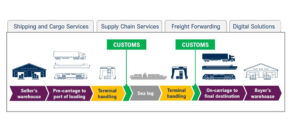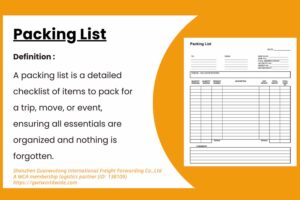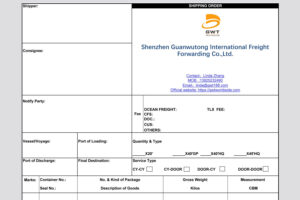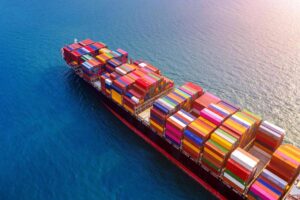Knowledge From Picking Up Empty Container To Container Loading Process
Understand the container loading process to better control your shipment and shipping freight.
Know Premium Sea Shipping Process From GWT Worldwide

Understanding the Container Pick-Up Process in China
Port Operations in China
Navigating the container pick-up process in China requires a comprehensive understanding of its major ports, each a bustling hub of global trade. Shanghai, for instance, stands as the busiest port worldwide, characterized by its advanced technology and efficient operations. Familiarity with its layout and specific terminals can significantly enhance the logistics experience. Similarly, Shenzhen serves as a crucial gateway for southern China, with terminals like Yantian and Shekou known for their streamlined processes. Ningbo, strategically located in the Yangtze River Delta, offers deep-water capabilities ideal for large vessels, making it a pivotal link in international shipping.
Navigating Port Logistics and Regulations
Understanding port logistics and regulations is essential. The customs procedures in China demand meticulous attention to detail, with key documents such as the Bill of Lading and Commercial Invoice required for clearance. Engaging a customs broker can facilitate this process, ensuring compliance with import/export regulations. Additionally, awareness of port fees, including terminal handling charges and storage fees, is crucial for budgeting. Most ports operate 24/7, but knowing specific service hours can help in planning pick-ups during off-peak times, thereby reducing wait times and enhancing efficiency.
Cautions for Different Types of Goods
When dealing with different types of goods, specific precautions must be taken. Perishable goods, for example, require containers with reliable refrigeration units. Monitoring temperature settings is vital to maintaining product quality, and prioritizing quick clearance and transport can prevent spoilage. Hazardous materials necessitate strict adherence to safety regulations, including proper packaging and labeling. Obtaining necessary permits in advance is critical, as is ensuring that staff are well-trained in handling these materials. For high-value items, implementing security measures such as GPS tracking and secure seals is advisable. Evaluating insurance options to cover potential losses further safeguards these valuable shipments.
Collaborating with Local Partners
Collaboration with local partners can greatly enhance the container pick-up process. Selecting logistics providers with a strong local presence and expertise ensures reliability and efficiency. Their knowledge of local regulations and logistics can be invaluable, and establishing clear communication channels helps address any issues promptly. Building relationships with port authorities is equally important. Regular engagement and communication can keep you informed about procedural changes, while attending industry events helps you stay updated on developments. These relationships can facilitate smoother operations and contribute to a more seamless logistics experience.
By understanding these aspects, businesses can navigate the complexities of China’s ports more effectively, improving efficiency and reducing potential delays. This comprehensive approach ensures a smoother container pick-up process, ultimately enhancing the overall supply chain management.
Of course! Here’s the continuation of the article with expanded content under each headline:
Preparing for Container Pick-Up
Documentation and Compliance
Before initiating the container pick-up process, ensuring that all necessary documentation is in order is crucial. This includes the Bill of Lading, Commercial Invoice, and Packing List. Each document must accurately reflect the shipment details to prevent delays. It’s advisable to work closely with a customs broker who can navigate the complexities of Chinese import/export regulations and ensure compliance with local laws. This step is vital for smooth customs clearance and to avoid potential fines or penalties.
Scheduling and Coordination
Effective scheduling and coordination are key to efficient container pick-up. This involves aligning the arrival of the vessel with the availability of transport resources. Utilize digital tracking systems to monitor vessel schedules and anticipate any changes. Coordinating with freight forwarders and local transport providers ensures that trucks are ready to transport containers as soon as they are cleared. This minimizes wait times and optimizes the use of resources, leading to a more streamlined operation.
On-Site Procedures at the Port
Container Inspection and Handling
Upon arrival at the port, containers undergo inspection to verify their condition and contents. This process involves checking for any damage that may have occurred during transit. Utilizing technology such as RFID tags can facilitate efficient tracking and handling. Port staff are trained to handle containers with care, but it is also important for your team to be present to oversee the process and ensure that all protocols are followed correctly.
Container Loading Process and Securement. Important Container Loading Process
Loading the container onto transport vehicles requires precision and adherence to safety standards. Proper securement of the container is essential to prevent movement during transit, which can lead to damage. Using appropriate securing equipment, such as twist locks and lashing straps, ensures that the container remains stable. Training staff in safe loading practices is critical to maintaining the integrity of the shipment and ensuring compliance with safety regulations.
Post-Pick-Up Logistics
Transportation and Delivery
Once the container is picked up, efficient transportation to its final destination is the next priority. Choosing the right mode of transport—whether by road, rail, or a combination—depends on factors such as distance, cost, and urgency. Implementing GPS tracking systems allows for real-time monitoring of the shipment, providing transparency and enabling timely updates to clients. Ensuring that transport vehicles are well-maintained and drivers are experienced contributes to a smooth delivery process.
Handling Delays and Issues
Despite meticulous planning, unforeseen delays can occur. Having a contingency plan in place is essential for addressing issues such as traffic congestion, equipment breakdowns, or regulatory holdups. Establishing strong communication channels with all stakeholders allows for quick problem-solving and minimizes disruptions. Flexibility and adaptability are key to maintaining efficiency and meeting delivery deadlines.
The article is presenting a rich knowledge of container loading process.
Returning a Full Container
Scheduling the Return
Returning a full container involves careful scheduling to align with port operations and avoid demurrage charges. It’s essential to coordinate with shipping lines and port authorities to determine available time slots for returning containers. Utilizing digital platforms for booking return slots can streamline this process and provide real-time updates on availability. Planning ahead and adhering to the return schedule helps prevent additional fees and ensures a smooth transition.
Documentation for Return
Proper documentation is crucial when returning a full container. Key documents such as the Delivery Order and Container Release Form must be completed accurately. These documents confirm the container’s return and ensure that it is received in good condition. Collaborating with customs brokers can help verify that all paperwork is in order, reducing the risk of delays or discrepancies during the return process.
Inspection and Condition Assessment
Before returning a container, conducting a thorough inspection is essential to assess its condition. This involves checking for any damage that may have occurred during unloading or transit. Documenting the condition with photos and reports can provide evidence in case of disputes. Ensuring that the container is clean and free from debris is also important, as ports may impose cleaning fees if containers are not returned in acceptable condition.
Transportation Logistics
Arranging transportation for the return of a full container requires careful coordination. Choosing reliable transport providers with experience in handling container returns is vital. Real-time tracking systems can monitor the progress of the return journey, ensuring timely delivery to the designated port. Efficient logistics management minimizes delays and contributes to a seamless return process.
Managing Unexpected Issues
Despite thorough planning, unexpected issues can arise during the container return process. These may include traffic delays, equipment malfunctions, or changes in port schedules. Having a contingency plan and maintaining open communication with all involved parties can help address these challenges promptly. Flexibility and proactive problem-solving are key to minimizing disruptions and ensuring a successful return.
The process of returning a full container is as critical as the initial pick-up. By focusing on precise scheduling, accurate documentation, and thorough inspections, businesses can ensure a smooth return process. Effective transportation logistics and the ability to manage unexpected challenges further enhance the efficiency of container returns. This comprehensive approach not only reduces costs but also strengthens relationships with shipping partners and port authorities, contributing to a more robust supply chain.
Conclusion
Successfully navigating the container pick-up process in China involves a deep understanding of port operations, meticulous preparation, and effective coordination. By focusing on compliance, leveraging technology, and building strong local partnerships, businesses can enhance their logistics operations and ensure timely, efficient delivery of goods. This comprehensive approach not only improves supply chain efficiency but also strengthens relationships with partners and clients, ultimately contributing to business success.
































